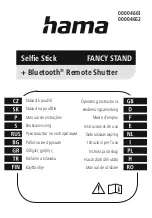
For Your Safety
120
noise.
Ţ
Limit the amount of time you listen. As the volume increases, less time
is required before your hearing could be affected.
Ţ
Avoid using headphones after exposure to extremely loud noises, such
as rock concerts, that might cause temporary hearing loss. Temporary
hearing loss might cause unsafe volumes to sound normal.
Ţ
Do not listen at any volume that causes you discomfort. If you
experience ringing in your ears, hear muffled speech or experience
any temporary hearing difficulty after listening to your portable audio
device, discontinue use and consult your doctor.
TIA Safety Information
The following is the complete TIA Safety Information for wireless handheld
phones.
Exposure to Radio Frequency Signal
Your wireless handheld portable phone is a low power radio transmitter
and receiver. When ON, it receives and sends out Radio Frequency (RF)
signals.
In August, 1996, the Federal Communications Commissions (FCC) adopted
RF exposure guidelines with safety levels for handheld wireless phones.
Those guidelines are consistent with the safety standards previously set by
both U.S. and international standards bodies:
ANSI C95.1 (1992) *
NCRP Report 86 (1986)
Summary of Contents for L17AG
Page 16: ...Features you will love Features you will love ...
Page 19: ...Basics Basics ...
Page 21: ...Basics 20 Phone layout Headset Jack Microphone Earpiece Front Camera Lens ...
Page 47: ...Apps Apps ...
Page 75: ...Settings 74 Settings Settings ...
Page 95: ...Appendix Appendix ...
Page 104: ...For Your Safety For Your Safety ...
Page 146: ......
















































